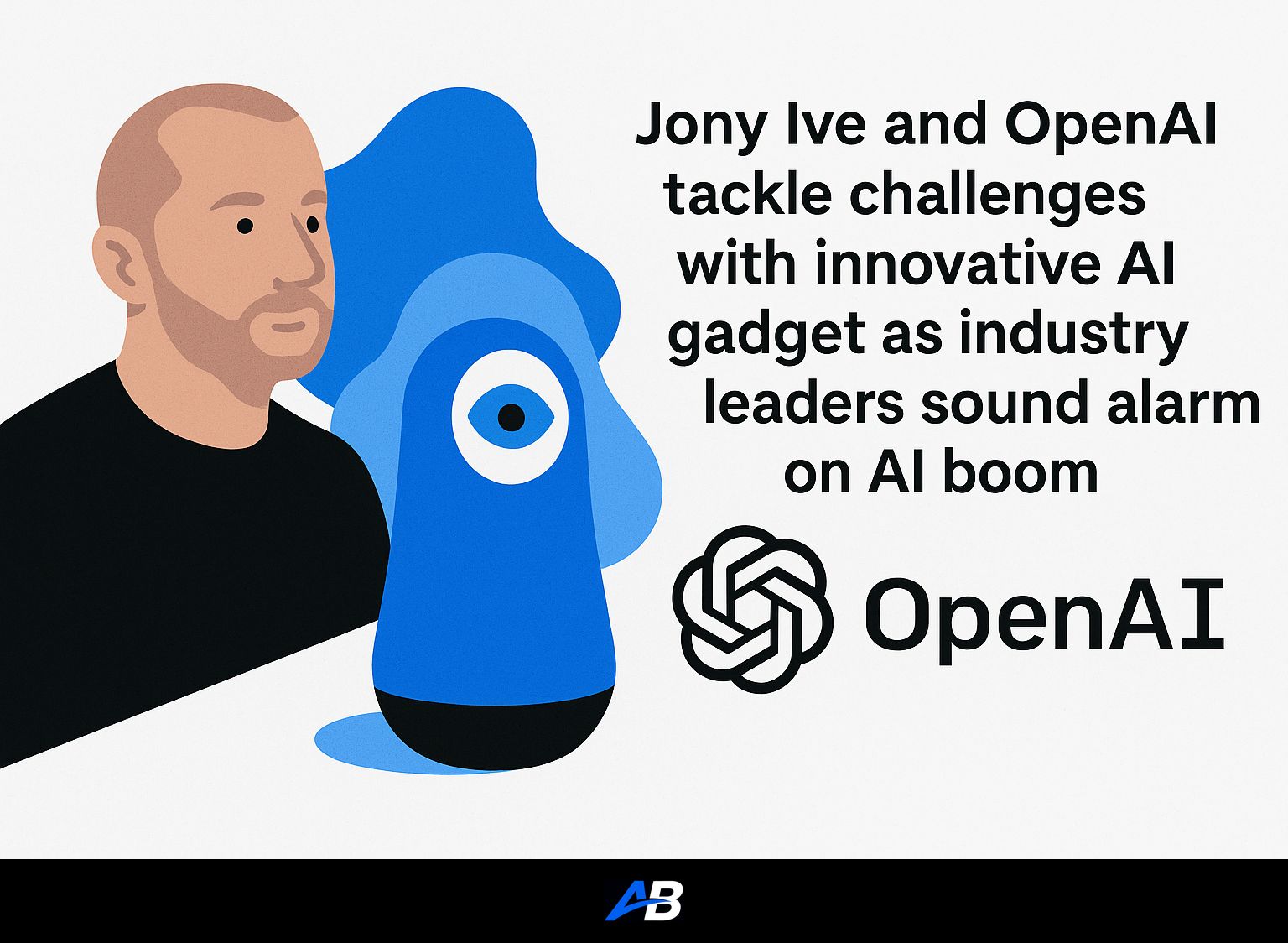OpenAI’s latest acquisition of Jony Ive’s startup, io Products, marks a pivotal moment in the tech landscape as it aims to reshape the way we interact with artificial intelligence. As industry leaders express concerns over the rapid AI boom, this collaboration may illuminate a new path forward.
Short Summary:
- OpenAI acquires io Products from Jony Ive for $6.5 billion, aiming to create a family of AI devices.
- The partnership signifies a shift towards hardware development that complements AI’s capabilities.
- Industry insiders express optimism yet caution about the future of AI integration into consumer devices.
> “We need to create a family of devices that would let people use AI to create all sorts of wonderful things,” stated Altman in a recent announcement.
The acquisition comes amid growing concerns and debates around the ethical implications and rapid expansion of AI capabilities. “We’re on the brink of massive change in the technological landscape,” said Gartner analyst Chirag Dekate. He emphasized, “This alliance secures world-class design expertise and product engineering talent essential for translating powerful AI models into intuitive user experiences.”
Originally, the two parties considered a partnership where io would develop hardware and sell it, while OpenAI would provide AI-driven intelligence. However, as they explored their ambitions, it became clear that a merger would be necessary to achieve their goals.
> “The ideas we’ve developed together are not only important but essential,” Ive commented about their collaborative growth. “We’ve created designs that celebrate human achievement and inspire joy.”
With this merger now in place, both teams will work closely to bring forth innovative products that focus on enriching human experiences through technology. The collective goal is to reimagine consumer products from a distinctive lens that integrates hardware and AI functionality in unprecedented ways.
As they dive into this new territory, many are left wondering what these “AI companions” will look like. Early communication indicates a direction toward a device that embodies a rich understanding of a user’s environment, making interactions more personal and natural.
Altman expressed urgency in disrupting the standard tech interfaces we know today, stating, “The laptops and phones we have really don’t cut it anymore for what AI is capable of achieving.” He further shared intentions to target 100 million units in the early phases of product rollout, aiming for the speediest introduction in tech history.
Speculations about design features have already emerged. The well-respected Apple analyst, Ming-Chi Kuo, hinted at an intriguing design that avoids current trends of bulky wearables, likely opting for a form that mirrors an elegant necklace – “slightly larger than the Humane AI Pin but just as captivating as an iPod Shuffle.”
This new “AI companion” isn’t purely about aesthetics. The overall experience is intended to facilitate a deep-seated connection with users, enabling them to engage more fluidly with their surroundings and the technology that serves them. It aims to utilize voice interaction and real-time responsiveness to create a seamless integration into daily life.
Meanwhile, cautionary voices stress the importance of thoughtful implementation. The implications of such devices, especially regarding privacy and constantly being “on,” present ethical quandaries that developers and creators must navigate. The excitement surrounding this tech wave comes bundled with responsibility to ensure security and user well-being.
Analysts are split on the potential revolutionary impact of the device. Some view it as merely a gadget that will inevitably face competition from more established tech giants who have yet to innovate as rapidly. Others, however, believe that if executed well, OpenAI and Ive could spearhead a new narrative in tech, combining design brilliance with AI innovations.
> “People often think of AI as software just living in the cloud,” remarked one industry observer. “But this merger suggests a reality where AI becomes a physical, tangible part of our lives.”
There remains skepticism encompassing whether this device will indeed serve as a genuine game-changer or a well-hyped product that will ultimately fade like many before it. Historically, tech enthusiasts have seen various attempts at “disruption” fall flat, leading to a cautious anticipation of this latest endeavor.
As the tech industry observes intensely, the combined prowess of Jony Ive’s design expertise and OpenAI’s AI capabilities promises a future worth following. With product launches slated for the late part of 2026, the real test will be whether they can deliver on the ambitious vision laid out.
Looking ahead, the ramifications of this partnership could potentially reverberate across multiple domains, pushing conventional boundaries as adaptive technological devices reshape how we perceive and interact within our personal and professional lives.
In the end, whether this leap into physically embodied AI proves to be a success hinges on the execution of their vision and the response of a global audience hungry for innovation yet cautious of quick fixes. OpenAI and Ive have set the stage for an exciting new act in the ongoing play of technology, and it’s one we’ll all be keen to watch unfold.
Do you need SEO Optimized AI Articles?
Autoblogging.ai is built by SEOs, for SEOs!
Get 30 article credits!



